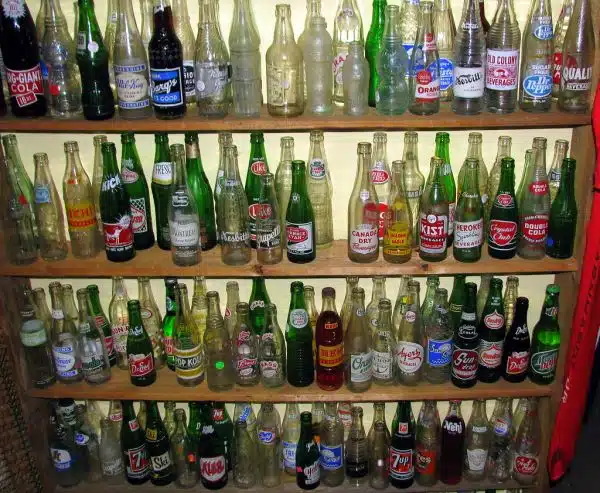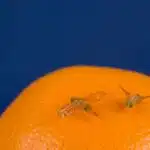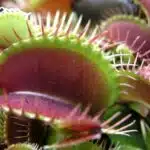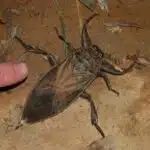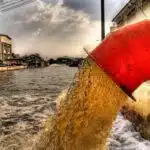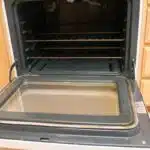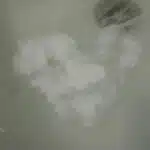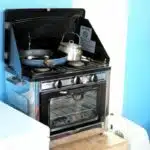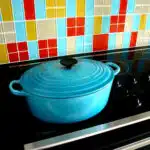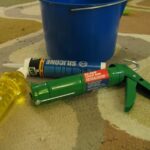Flies are a common nuisance in many households, and their presence can be quite bothersome. While there are various commercial fly traps available in the market, they can be quite expensive and contain harmful chemicals that may pose a health risk. Fortunately, making a fly trap from an empty soda bottle is an effective and inexpensive alternative.
This DIY project is easy to make and requires only a few household items. The best part about this project is that it uses natural ingredients that are safe for both humans and pets. In this article, we will guide you through the process of making your own fly trap using an empty soda bottle. By the end of this article, you will have the knowledge to effectively control pesky flies in your home without breaking the bank or compromising on safety.
Understanding The Benefits Of A Homemade Fly Trap
Benefits of a Homemade Fly Trap
When it comes to pesky flies, homemade fly traps can be an effective and eco-friendly solution. While store bought options may seem convenient, they often contain harmful chemicals that can have negative effects on both humans and the environment. In contrast, homemade fly traps use natural ingredients that are safe and non-toxic.
One of the major benefits of a homemade fly trap is its effectiveness. Flies are attracted to certain scents such as vinegar, fruit juices, or sugar water, all common ingredients used in making a homemade trap. Once the flies enter the trap, they are unable to escape and eventually drown in the mixture. This method has been found to be just as effective as store bought traps while being kinder to the environment.
In addition to being effective, homemade fly traps also offer an opportunity for creativity and customization. With just an empty soda bottle and a few other materials, one can create a unique trap customized for their specific needs. This not only adds a personal touch but also allows for flexibility in terms of size and placement. Overall, homemade fly traps provide numerous benefits over store-bought options in terms of effectiveness, safety, and customization possibilities. In order to make your own fly trap at home, let’s start by gathering the necessary materials.
Gathering The Necessary Materials
What do you need to make a fly trap from an empty soda bottle? Before we dive into the details of making this DIY project, let’s gather all the necessary materials first. Fortunately, most items you’ll need for this project are easy to find in your home.
Firstly, you’ll need an empty soda bottle. Any size will do, but the bigger the bottle, the more flies it can trap. If you don’t have any available or simply don’t drink soda at home, there are plenty of DIY alternatives that you can use instead. You may use any plastic container with a lid or even a large mason jar. These eco-friendly options also work great and reduce waste.
Another essential item that you’ll need is bait to attract flies. The most effective yet inexpensive bait is sugar water or vinegar mixed with fruit or vegetable scraps. Other DIY alternatives include honey, maple syrup or beer. Besides being environment-friendly and cheap, these natural baits also prevent harm to other beneficial insects like bees and butterflies.
Lastly, you’ll need scissors or a sharp knife to cut the top part of the soda bottle off and make holes on its sides where flies can enter through. Additionally, prepare some string or twine to hang your fly trap outside where they’re commonly found – near garbage cans or compost piles. Now that we’ve gathered all our materials let’s move on to preparing our soda bottle for our fly trap project!
Preparing The Soda Bottle
To prepare the soda bottle for the fly trap, it’s important to start with a clean and empty bottle. You can use any size of soda bottle, but a 2-liter bottle is recommended. Begin by removing the label from the outside of the bottle. This can be done by soaking the bottle in warm, soapy water for a few minutes and then using a scrub brush or sponge to remove any remaining residue.
Next, it’s time to decorate the bottle. While this step is optional, it can add some personality to your fly trap and make it more visually appealing. To decorate the bottle, you can use paint, markers, stickers, or any other materials you have on hand. Be creative and have fun with it! Some ideas include painting stripes or polka dots on the bottle or adding cute insect-themed stickers.
After decorating the bottle, give it one last cleaning before moving on to creating the bait. Rinse out any remaining soap or debris from inside the bottle and allow it to dry completely before proceeding with the next step.
- Remove all labels from the outside of the soda bottle.
- Decorate your fly trap with paint, markers, stickers or other materials.
- Give your decorated soda bottle one final cleaning before proceeding.
Now that your soda bottle is clean and decorated to your liking, it’s time to move on to creating the bait that will attract those pesky flies.
Creating The Bait
As the saying goes, “you can catch more flies with honey than with vinegar.” This idiom rings true for making a fly trap, as the bait plays a crucial role in attracting these pesky insects. There are various types of bait that you can use to lure flies into your trap. One option is to use sweet substances such as sugar water, syrup, or fruit juice. Flies are attracted to sugary scents and will flock towards them. Another alternative is to use meat or fish scraps. Flies are also drawn to these pungent smells.
If you’re looking for DIY alternatives, there are plenty of options available in your pantry. A mixture of sugar and vinegar works well as a fly attractant. The sweetness of sugar attracts the flies while the acidity of vinegar traps them inside the bottle. Alternatively, you can use ripe fruits such as bananas or peaches as bait. These fruits emit a strong aroma that is irresistible to flies.
Once you have decided on the type of bait you want to use, it’s time to add it to the bottle. Carefully pour your chosen bait into the bottom half of the bottle until it reaches about 1-2 inches deep. You don’t need too much bait; just enough to cover the bottom surface area should suffice. Be sure not to spill any on the sides or outside of the bottle, as this may deter flies from entering. With your bait in place, it’s time to move on to closing up your fly trap and setting it up for maximum effectiveness.
Adding The Bait To The Bottle
Choosing the Bait: When selecting the bait for a fly trap, consider factors such as the type of fly and the time of year.
Preparing the Bait: For best results, the bait should be prepared to create a powerful smell that will attract the flies.
Adding the Bait: To add the bait to the bottle, make a small hole in the lid and then add a teaspoon of bait to the bottom of the bottle.
Choosing the Bait: Experimentation and research may be needed to find the most effective bait for the fly trap.
Preparing the Bait: Depending on the bait chosen, preparation may require boiling and blending to create an attractive smell.
Adding the Bait: Make sure to secure the lid on the bottle tightly to ensure the bait will not dry out and lose its effectiveness.
Choosing The Bait
Have you ever wondered why flies are attracted to certain types of bait? Choosing the right bait for your fly trap is crucial if you want to catch as many flies as possible. There are several types of bait that can be used, including sweet and savory options. Sweet options include fruits like bananas, apples, and grapes, while savory options include meats like chicken or fish.
The type of bait you choose will also depend on what type of flies you are trying to attract. For example, fruit flies are attracted to sweet smells and will flock towards fruit baits. On the other hand, houseflies are attracted to meaty smells and will be more drawn towards savory baits like chicken or fish. If you are unsure what type of flies are infesting your home or garden, try using a mixture of both sweet and savory baits in your trap.
By carefully choosing the right bait for your fly trap, you can increase the chances of catching a large number of flies. Remember to switch out the bait every few days so that it remains fresh and potent. With a bit of experimentation and patience, you can create an effective fly trap that will keep pesky insects at bay without having to resort to harmful chemicals or pesticides.
Preparing The Bait
Preparing the bait is an essential step in creating an effective fly trap. Understanding attractant scents and choosing the right bait ingredients can significantly increase the chances of attracting a large number of flies. It is important to keep in mind that different types of flies are attracted to different scents, so choosing the right bait for your trap is crucial.
When preparing your bait, it is essential to use fresh ingredients. For sweet baits, use ripe fruits like bananas, apples, or grapes. For savory baits, use fresh chicken or fish. It is also important to use high-quality ingredients as this will ensure that your bait remains potent for longer periods.
One way to prepare your bait is by mashing or blending it to release its scent better. You can also add a small amount of water to create a more liquid consistency that will be easier for flies to access. Once you have prepared your bait, you can add it to your fly trap and wait for the insects to flock towards it. Remember to switch out the bait every few days so that it remains fresh and potent.
Adding The Bait
After preparing your bait, the next step is to add it to your fly trap. It is important to note that different types of flies are attracted to various scents, so choosing the right bait for your trap is crucial. Moreover, there are alternative baits that you can use if you want to attract specific fly species.
To add the bait to the bottle, carefully open the trap and pour the bait inside. Avoid spilling any of the bait outside the bottle as this may attract flies to other areas of your home or garden. You may also want to consider using a funnel when adding the bait to make it easier and more precise.
Remember that adding fresh and potent bait is essential in attracting and trapping flies effectively. Be sure to switch out your bait every few days or as needed, especially if it starts to dry out or lose its potency. With these tips in mind, you can create an effective fly trap that will help keep your home and garden free from pesky insects.
Cutting The Bottle Top
To begin cutting the top of your soda bottle, you will need a pair of scissors or a sharp blade. Hold the bottle securely in one hand and use the other to make a horizontal cut around the circumference of the bottle about two inches below the top. Be sure to make the cut as straight and even as possible.
Next, make three vertical cuts starting from the top edge of the bottle down to where you made your horizontal cut. These cuts should be spaced evenly around the circumference of the bottle, creating three flaps that can be bent inward. Using your fingers, carefully bend each flap inward so they overlap each other slightly and create a triangular opening at the top of your trap.
Decorative options for your fly trap include painting or covering it with decorative duct tape. It’s important to consider safety when decorating or handling your trap; avoid using toxic materials that could harm children or pets. Additionally, always wash your hands after handling any type of insect trap to prevent spreading germs or disease.
Transitioning into inverting the top half of the bottle: With your top half now cut and ready for use, it’s time to move on to inverting it into the bottom half.
Inverting The Top Half Of The Bottle
- To make a fly trap from an empty soda bottle, the first step is to cut the bottle in half.
- To make the fly trap, the top half of the bottle needs to be inverted.
- Care must be taken to ensure that the bottle is cut evenly and securely.
- Inverting the top half of the bottle creates an easy to use, cost-effective fly trap.
Cutting The Bottle
Cutting the Bottle is a crucial step in making a fly trap from an empty soda bottle. There are several variations on cutting the bottle, but the most common method involves splitting the top half of the bottle from the bottom. To do this, you will need a sharp utility knife or scissors and a steady hand. Begin by marking a line around the circumference of the bottle where you want to make your cut. Then, using your cutting tool, carefully score along this line until you have cut all the way through.
When cutting your soda bottle, it is important to take safety precautions to avoid injury. Always wear gloves to protect your hands and fingers from cuts and scrapes. Also, be sure to work on a stable surface that won’t slip or shift as you cut. Finally, use caution when handling sharp objects like knives or scissors – never leave them lying around where they can be accidentally knocked over or stepped on.
Variations on cutting may include creating holes in the bottle instead of removing an entire section. This technique allows flies to enter while keeping them trapped inside once they’re in. To do this, simply use a small hole punch or drill bit to make holes evenly spaced around the top of the bottle’s neck. With these variations, experimenting with different sizes and shapes is key to finding what works best for your specific fly trap needs.
Inverting The Top Half
Inverting the top half of the bottle is another crucial step in making a fly trap from an empty soda bottle. Understanding the benefits of this technique will help you create a more effective trap. By inverting the top half of the bottle, you create a funnel that directs flies into the trap but makes it difficult for them to escape. This means that once they are inside, they are trapped and unable to fly out.
Troubleshooting tips can help you overcome common issues with this technique. One issue is that if the funnel is too steep or narrow, flies may have trouble entering and become discouraged from trying. To avoid this, try to create a gradual incline that leads into the bottle. Another issue is that if there are any gaps or openings around the rim of the inverted section, flies may be able to escape. To prevent this, make sure that the edges are tightly sealed with tape or glue.
Incorporating these tips and techniques will help you create an effective fly trap using an inverted soda bottle. With a little experimentation and creativity, you can customize your trap to suit your specific needs and preferences. Whether you’re dealing with pesky fruit flies in your kitchen or larger outdoor species like horseflies or mosquitoes, an inverted soda bottle can be a simple yet effective solution for catching these bothersome insects.
Securing The Bottle Top
Coincidentally, the choice of securing the bottle top is as important as choosing the right bait. A secure closure ensures that the flies remain trapped inside and do not escape. There are various options for alternative closures that one can use, depending on what’s available.
One option is to create a hole in the bottle cap and insert a piece of string or wire through it. The string should be long enough to tie around the bottle neck, ensuring that the cap stays in place. Another option is to use a rubber band to hold down the cap tightly. This method is effective but requires constant monitoring to ensure that the rubber band doesn’t snap due to wear and tear.
However, safety considerations must be taken into account when securing the bottle top. Ensure that there aren’t any sharp edges left after cutting or drilling holes in the cap. Additionally, if using a rubber band, ensure that it isn’t placed too tightly around the bottle neck, which could cause it to snap and injure someone nearby.
Moving forward with creating an effective fly trap requires a secure closure before moving on to creating an entry point for the flies. By taking safety considerations into account and exploring alternative closures such as inserting a piece of string or using a rubber band, you will have successfully secured your soda bottle fly trap. Now let’s move onto creating an entry point for these pesky insects without delay.
Creating The Entry Point
The creation of a fly trap from an empty soda bottle begins with cutting the bottle to form the desired shape. This can be achieved with a pair of sharp scissors, a box cutter, or a craft knife. Once the bottle is cut, the entry point should be secured to the bottle with an adhesive such as hot glue, superglue, or craft glue. Additionally, the entry point can be secured with tape or string.
Cutting The Bottle
Cutting the Bottle: Creating the Entry Point
Before you start cutting your soda bottle, make sure to have all necessary materials ready. You will need a pair of scissors or a sharp knife, and a marker to trace the cutting lines. If you are using a knife, it is recommended to have an adult supervise the process for safety precautions.
The first step in creating the entry point is to remove the bottle cap and clean out any remaining soda residue. Next, use your marker to draw a line around the bottle, about 2-3 inches from the top. This line will serve as your guide when cutting through the plastic.
Alternative methods for cutting include using a heated knife or hot wire cutter. These can create smoother edges than scissors or knives but require additional equipment and may be less safe for inexperienced crafters. Whichever method you choose, always remember to use caution and protect yourself from cuts or burns.
Overall, creating an entry point in your soda bottle fly trap is an essential step towards trapping those pesky insects. By following safety precautions and choosing an appropriate cutting tool, you can create a clean and effective entry point that will attract flies without harming other beneficial insects in your garden or home.
Attaching The Entry Point
Now that you have created the entry point for your soda bottle fly trap, it’s time to attach a decorative or alternative entryway. This will not only enhance the aesthetics of your trap, but also make it more effective in catching flies.
To create a decorative entry, you can use materials such as ribbon, twine, or colorful duct tape. Simply wrap these materials around the top of the bottle and tie them in a knot or bow to create an eye-catching design. You can also add additional embellishments such as beads, buttons, or feathers to make your fly trap stand out even more.
Alternatively, you can attach an alternative entry using a small piece of fruit or meat. Flies are attracted to the scent of rotting food and will be drawn towards this new entryway. Simply cut a small hole in the side of the bottle near the top and insert your chosen bait. Make sure to secure it with tape or glue so that it doesn’t fall out.
By attaching a decorative or alternative entry to your soda bottle fly trap, you can increase its effectiveness in trapping pesky insects while also adding a touch of creativity to your DIY project. Experiment with different materials and designs until you find one that works best for you and your home or garden needs.
Hanging The Fly Trap
After making your fly trap, it’s time to hang it up. Choosing the right location is crucial to maximizing its effectiveness. Mosquitoes and flies are attracted to stagnant water or moist areas, so be sure to place the trap in a location where these pests are commonly found. For example, near garbage cans or compost bins, near a pool or pond, or in a damp corner of your yard.
To make your fly trap more visually appealing, you can decorate it with paint or stickers. This step is optional but can add some personality to your traps and make them blend better with their surroundings. If you plan on decorating your fly trap, be sure to use non-toxic paint and glue. You don’t want any harmful chemicals leaching into the environment.
Once you have chosen the perfect spot for your fly trap and decorated it if desired, all that’s left is to hang it up. Use a strong string or wire to hang the bottle from a tree branch or other sturdy structure. Be sure that it is out of reach of children and pets. With proper placement and decoration, your homemade fly trap will not only be effective but also look great in your yard!
Don’t let all of your hard work go to waste by neglecting maintenance on your fly trap. Ensuring that it remains clean and functional is essential for continued success in keeping flies at bay.
Maintaining The Fly Trap
- When it comes to maintaining your homemade fly trap, regular cleaning is essential.
- The bottle should be emptied and rinsed out at least once a week to prevent the buildup of bacteria and other debris.
- The fly trap should also be refilled with a solution of sugar and water, as this will attract more flies to the trap.
- Monitoring the effectiveness of the trap is also important to ensure it is functioning properly and catching flies.
- Consider adding a bit of vinegar to the solution in the bottle to make it even more attractive to flies.
- Lastly, check the bait often and replace it when necessary so the trap remains effective.
Cleaning
When maintaining your fly trap, cleaning is a crucial step in ensuring its effectiveness. Effective cleaning techniques can help keep your trap functioning optimally, preventing the buildup of debris and potential blockages that may reduce its efficacy. To clean your fly trap, start by removing any trapped flies and disposing of them properly. Then, using a mixture of water and an eco-friendly cleaning product, wipe down all surfaces of the trap to remove any remaining debris or residue.
When it comes to choosing eco-friendly cleaning products, there are several options available on the market. These products are designed to be gentle on both the environment and your fly trap while still providing effective cleaning power. Look for products that are free of harsh chemicals and use natural ingredients to break down dirt and grime. Additionally, consider investing in reusable cloths or sponges to further minimize waste when cleaning your fly trap.
Regularly cleaning your fly trap is essential for keeping pesky flies at bay. By using effective cleaning techniques and eco-friendly products, you can maintain a clean and functional fly trap without harming the environment. Incorporate these tips into your routine maintenance plan to ensure that your fly trap remains an effective tool for keeping your home or outdoor space free from unwanted pests.
Refilling
Now that we’ve discussed the importance of cleaning your fly trap, let’s move on to another crucial step in maintaining its efficacy: refilling. Refilling your fly trap is necessary when the bait or attractant has been depleted, and it is no longer attracting flies. It is essential to refill your trap promptly to ensure that it continues to function optimally and reduce the risk of flies breeding and multiplying.
When refilling your fly trap, it is essential to consider eco-friendly alternatives that can help reduce waste. Instead of purchasing pre-packaged baits or attractants, try making your own using natural ingredients such as vinegar or fruit juice. By doing this, you not only eliminate unnecessary packaging waste but also save money in the long run.
Another eco-friendly alternative for refilling your fly trap is to invest in a reusable bait container. These containers are designed to be filled with homemade attractants and can be easily cleaned and refilled as needed. Not only do they help reduce waste, but they also provide a more sustainable option for maintaining an effective fly trap in your home or outdoor space.
Monitoring
Now that we’ve covered the importance of cleaning and refilling your fly trap, it’s time to discuss another crucial aspect of maintaining its efficacy: monitoring. Regular monitoring is necessary to ensure that your fly trap is working as intended and catching the maximum number of flies possible. There are various types of monitoring techniques you can employ to keep track of your trap’s performance, such as visual inspections or counting the number of flies caught.
One important reason for regular monitoring is to identify any potential issues with your fly trap before they become severe. For instance, if you notice a decline in the number of flies caught, it could indicate that the bait or attractant needs replacing, or there may be an issue with the trap itself. By catching problems early on through regular monitoring, you can address them promptly and prevent further complications.
In addition to identifying issues, regular monitoring also helps determine when it’s time to clean or refill your fly trap. Depending on how many flies you’re catching and the size of your trap, you may need to do this more frequently than others. By keeping track of how well your trap is performing through regular monitoring, you’ll better understand when it’s time for maintenance tasks like cleaning or refilling.
Disposing Of The Trapped Flies
Now that you have successfully trapped flies in your homemade soda bottle fly trap, it is important to maintain it for optimal effectiveness. Proper maintenance includes regularly cleaning the trap and disposing of the trapped flies. Neglecting these steps can lead to a buildup of dead flies and unpleasant odors.
To properly maintain your fly trap, begin by checking it daily for any signs of wear or tear. If you notice any damage, repair or replace the trap as needed. Next, remove any dead flies from the trap using eco-friendly options such as composting or burying them in soil to avoid harming other animals. Alternatively, you can simply dump the contents into a garbage bag and dispose of it properly.
When cleaning your fly trap, avoid using harsh chemicals that can harm the environment or leave behind harmful residues. Instead, opt for natural cleaning methods such as vinegar and water or soap and water solutions. Gently scrub both the inside and outside of the bottle with a soft-bristled brush to remove any leftover debris or residue.
Proper disposal and regular maintenance are crucial for ensuring that your soda bottle fly trap remains effective at trapping flies. By following these simple steps, you can keep your home free from pesky insects while also protecting the environment from harmful chemicals and pollutants.
For enhanced effectiveness of your fly trap, there are a few tips you should keep in mind. Firstly, make sure to place the trap in areas where flies are most active and likely to be attracted, such as near trash cans or in areas with standing water. Additionally, consider adding attractants such as honey or apple cider vinegar to increase its effectiveness. Finally, empty and clean the trap regularly to prevent buildup that could deter new flies from being attracted to it.
Tips For Enhanced Effectiveness
Did you know that flies can lay up to 500 eggs in their short lifespan of two weeks? This makes it crucial to have an effective fly trap to prevent these pesky insects from multiplying and becoming a nuisance. Here are some tips for enhancing the effectiveness of your DIY soda bottle fly trap.
Tips for Placement:
- Place the trap away from where people will be sitting or eating, as flies can carry disease-causing bacteria.
- Hang the trap at eye level to attract more flies.
- Ensure that the trap is in a shaded area, as flies prefer cooler environments.
Alternative Bait Options:
- Vinegar: Flies are attracted to the smell of vinegar and will be lured into the trap.
- Fruit: Cut up pieces of overripe fruit and place them inside the trap.
- Sugar water: Mix equal parts sugar and water, heat until dissolved, and pour into the trap.
By following these placement and bait tips, you can increase the number of flies caught in your trap. However, there are also common mistakes that should be avoided when making a soda bottle fly trap, such as using too much bait or not changing the bait frequently enough. In the next section, we will go over these mistakes in more detail and how to avoid them for maximum efficacy.
Common Mistakes To Avoid
Tips for enhanced effectiveness are great, but it’s also important to know what common mistakes to avoid when making a fly trap from an empty soda bottle. One common mistake is bait placement. It’s crucial to place the bait at the bottom of the bottle and not on the sides or top. Flies are attracted to rotting or sweet smells, so placing the bait directly at the bottom will increase your chances of trapping them.
Another mistake people make is not positioning their bottle correctly. The opening should be facing downwards, and there should be no gaps between the cap and the rest of the bottle. If there are gaps or if the opening is facing upwards, flies will be able to escape easily. Additionally, it’s important to place your trap in areas where flies are most active, such as near garbage cans or compost piles.
By avoiding these common mistakes, you can increase your chances of catching those pesky flies. Remember to place your bait at the bottom of the bottle and position it correctly with no gaps in order to create an effective trap. Say goodbye to annoying flies and hello to a more comfortable living space.
Conclusion: Say goodbye to annoying flies! Now that you have learned about tips for enhanced effectiveness and common mistakes to avoid when making a fly trap from an empty soda bottle, you can confidently set up your own trap without making any errors. With patience and persistence, you’ll soon see results in reducing those buzzing pests around your home. Don’t let them ruin your day – take action today!
Conclusion: Say Goodbye To Annoying Flies!
As we say goodbye to annoying flies, it’s important to consider natural alternatives and DIY solutions for fly prevention. Instead of resorting to harmful chemicals, there are eco-friendly methods that can effectively keep flies away from your home. One such method is making a fly trap using an empty soda bottle. This simple DIY solution can help reduce the number of pesky flies buzzing around your space.
In addition to making a fly trap, there are other fly prevention techniques you can try. Here are three ideas:
Keep your space clean: Flies are attracted to food waste and other organic matter, so make sure to keep your kitchen and trash cans clean.
Use essential oils: Certain scents like lavender, eucalyptus, and peppermint can repel flies. Mix a few drops with water in a spray bottle and use it to clean surfaces or spray around doors and windows.
Install screens: Keep doors and windows closed or install screens to prevent flies from entering your home.
By implementing these eco-friendly methods and DIY solutions, you can say goodbye to annoying flies without harming the environment or exposing yourself and others to harmful chemicals. Fly prevention is key in maintaining a healthy living space, so don’t hesitate to try out these tips today!
Conclusion
To create a fly trap from an empty soda bottle is a simple and cost-effective solution to combat pesky flies. The benefits of making your own trap include reducing the amount of waste in landfills and avoiding the use of harmful chemicals found in store-bought traps. To begin, gather the necessary materials such as scissors, tape, and an empty soda bottle. Prepare the bottle by cutting it in half and creating small holes near the top for flies to enter.
Next, create a bait using ingredients such as honey or sugar water mixed with vinegar or fruit juice. Add this mixture to the bottom half of the bottle and place the top half upside down inside the bottom half. This will create a funnel through which flies can enter but have difficulty leaving. Once trapped, dispose of the flies by either releasing them outside or placing them in a sealed bag before throwing away.
For enhanced effectiveness, place multiple traps around areas where flies are commonly found and make sure to refill bait every few days. Avoid common mistakes such as forgetting to add enough bait or placing traps too close together. By following these steps, you can say goodbye to annoying flies while also contributing to a more sustainable environment.
Image Credits
- “Old Soda Bottles – Bristol, VA” by SeeMidTN.com (aka Brent) (featured)

